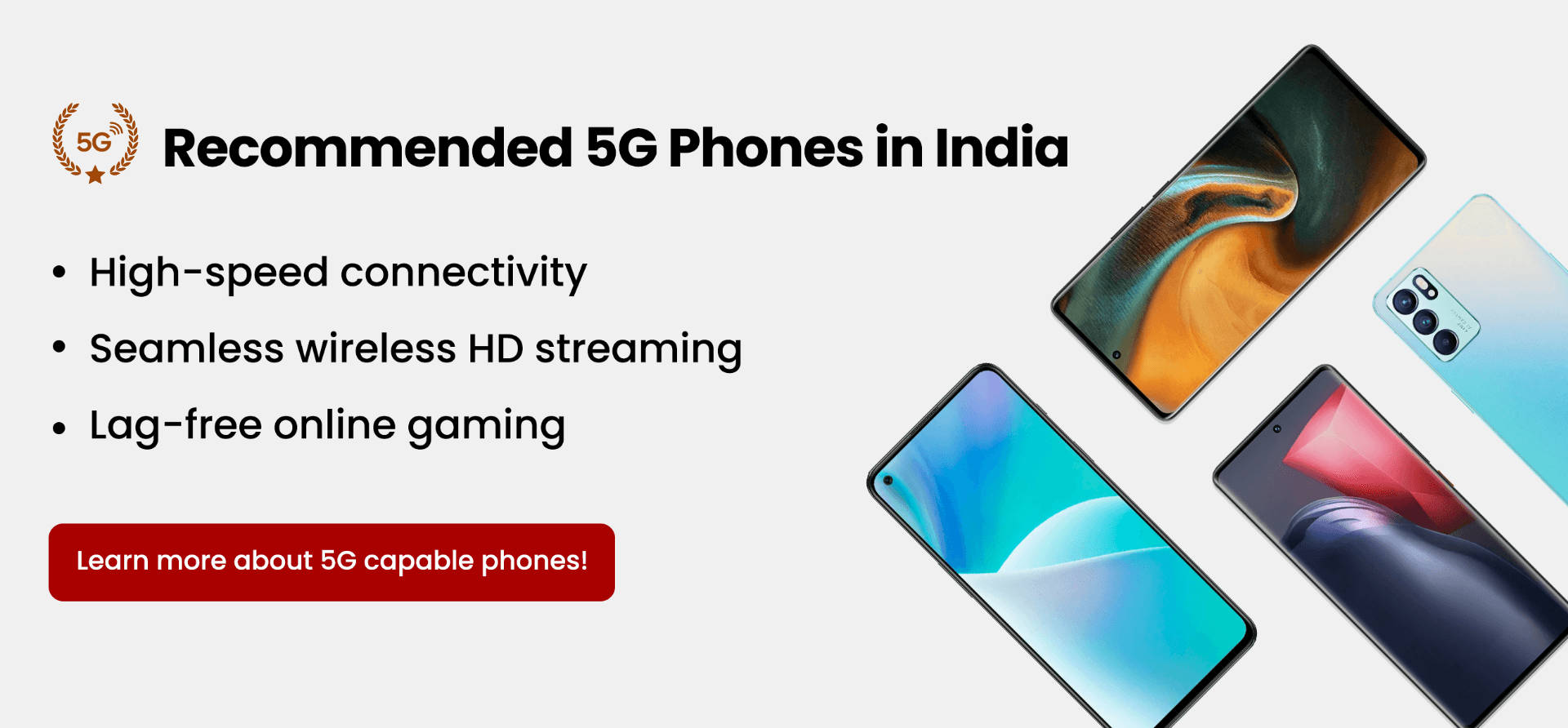Review Summary
Expert Rating
The Vivo V25 Pro has been announced in the Indian market and the device retails for a starting price of Rs 35,999 in the country. Competing in the budget flagship space, the handset faces stiff competition from the likes of Realme GT Neo3 (review), OnePlus 10R (review), and more. Interestingly, Vivo has, time and again, made a brouhaha over the cameras and the design on its V series smartphones. This time around, though, the company is also bringing a curved 3D AMOLED display to the mix. So, is the Vivo V25 Pro worth the hype? Let’s find out in this detailed review.
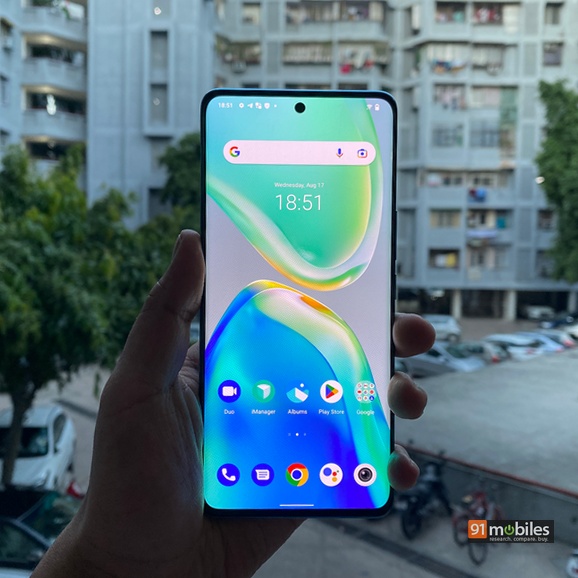
Verdict
Vivo has definitely nailed the design and display aspects of the V25 Pro. At the same time, the company has thrown in decent performance and battery life into the mix as well. However, the handset’s languid low-light photography chops and mono speaker setup may dissuade a few buyers from investing in the phone.
The lowdown
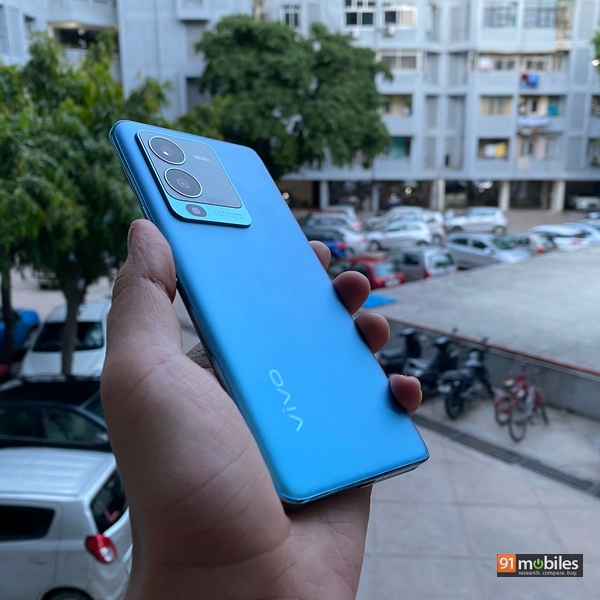
A cursory glance at the V25 Pro’s design tells me that the device is made to impress. Not many phones, if any, sell at the V25 Pro’s price point tout a curved front display as well. Personally, I prefer a clean and flat front panel as it feels more ergonomic to use day in and day out. However, there’s no denying that the V25 Pro’s narrow 3D Curved screen looks stunning. The smartphone’s colour-changing matte-finish glass back and its stylishly crafted rectangular camera housing also add to the V25 Pro’s mystique.
As for the I/O, a single speaker unit, a USB Type-C port, and a dual-SIM slot flank the V25 Pro’s bottom edge. The volume rocker and power buttons occupy positions on the left side, while the right side remains free of any distractions. All in all, the V25 Pro is a looker, and the device punches above its weight in the design department.
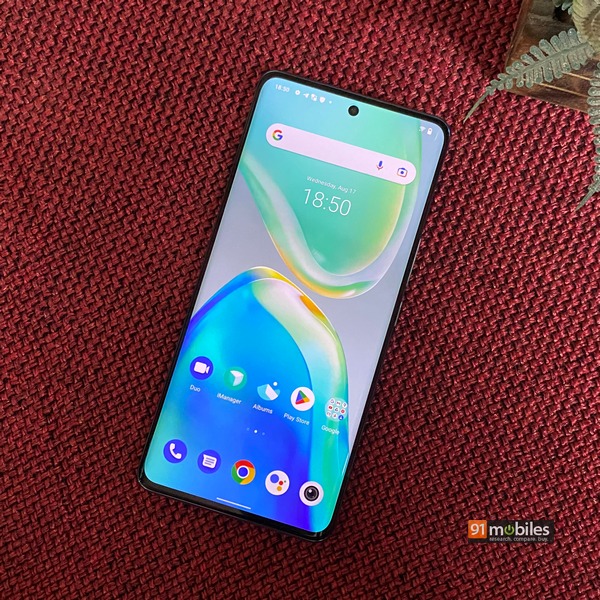
The Vivo V25 Pro’s viewing experience is consistent with competing devices too. The handset’s 6.5-inch, FHD+, curved display is virtually bezel-less and provides a ton of screen real-estate. The panel is of the AMOLED variety and touts a 6,000,000:1 contrast ratio, offers deep blacks, and even accentuates the colours on the screen, thereby paving the way for vivid hues that look captivating, to say the least. Vivo claims the panel covers 100 percent coverage of the DCI-P3 colour gamut and the screen can also relay HD and HDR10+ media from OTT services like Netflix, which is great.
The company has not specified the display’s brightness levels but the screen’s legibility didn’t falter in sunny outdoor conditions. And, for those interested in a bit of mobile gaming, the V25 Pro’s display offers a touch sampling rate of 300Hz for super-low latency. The refresh rate can dynamically switch between 60Hz and 120Hz when required and the panel’s punch-hole camera doesn’t come in the way when viewing content on the fly either.
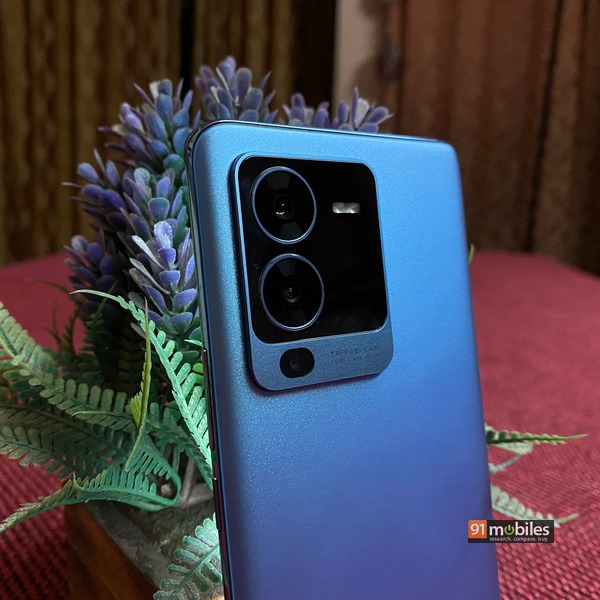
Camera-wise, the phone has an OIS-enabled 64MP primary shooter along with an 8MP ultra-wide and 2MP macro sensor. Vivo has furnished the phone with a slew of low-light photography features that, on paper, look impressive. This includes OIS Super Night Portrait, Real-Time Extreme Night Vision, OIS Night mode, and more. Unsurprisingly, the device clicks stellar photos after the sun has set and the smartphone’s main camera exhibits good exposure control and squeezes out adequate details from a given scene. There are some issues, of course, and the sensor introduces a bit of lens flare in the images. That said, the same is resolved with the dedicated Night mode utility.
Daylight photography is better albeit the sensor’s output can be a tad oversaturated at times. On the bright side, the details are churned out reasonably well and the exposure levels do not crush the highlights either. The shadows tend to be a bit darkened owing to which, the image appears slightly contrasty. The ultra-wide shooter also produces images that are acceptable, however, the 2MP macro shooter has a lot of scope for improvement.
All this to say, the V25 Pro packs in a satisfactory optical apparatus that performs admirably in a well-lit environment. The same is true for the smartphone’s 32MP selfie camera too, which takes shots with good facial detailing, and correct skin tones. Furthermore, the sensor exposes the background really well too, which is great.
The Vivo V25 Pro ships with the Dimensity 1300 SoC which can comfortably tackle demanding workloads and juggle a few apps in memory too. Be that as it may, the devices that compete with the V25 Pro are running more powerful hardware under their hoods. In fact, Qualcomm’s Snapdragon 870 and MediaTek’s Dimensity 8100 platform are commonplace on smartphones retailing below the Rs 40,000 mark. Needless to say, while the V25 Pro performs well, the device might not age as well as the competition.
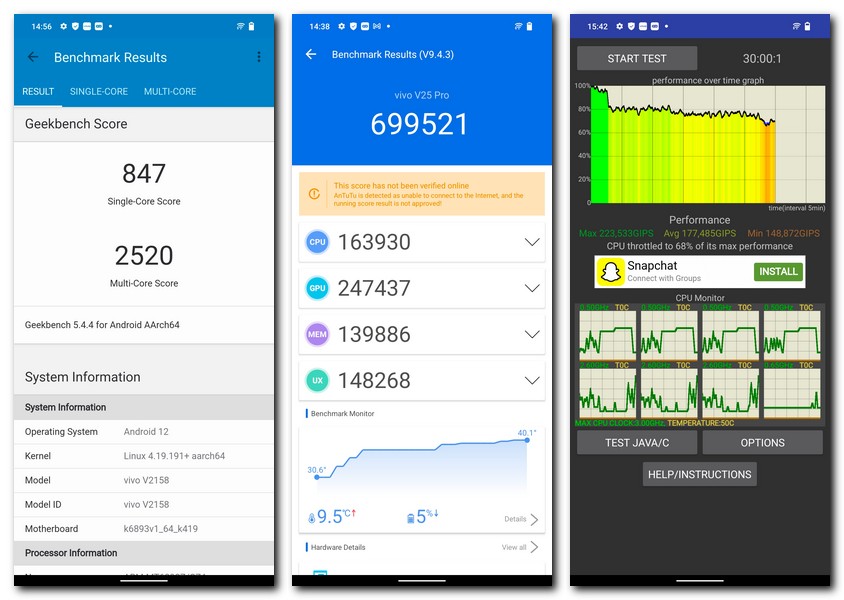
Regardless, let’s take a closer look at the phone’s performance chops. Starting with synthetic tests, the V25 Pro overturned a good score that was just shy of the 700,000 point mark in the Antutu benchmark. Geekbench 5’s multi-core result, on the other hand, was capped at a respectable 2,520 points as well. Much to my dismay, the phone lacks a robust thermal design, and the device throttles to 68 percent of its peak performance in the CPU Throttle benchmark. As for gaming, buyers eyeing the set can run BGMI at Extreme (60fps) frame rate but only when the graphics are set to the ‘Smooth’ preset. Apart from that, Vivo provides up to 12GB of LPDDR4X RAM, which can be further expanded by utilising the smartphone’s virtual swap feature. For storage purposes, buyers opting for the phone will get 256GB of non-expandable, UFS 3.1 storage.
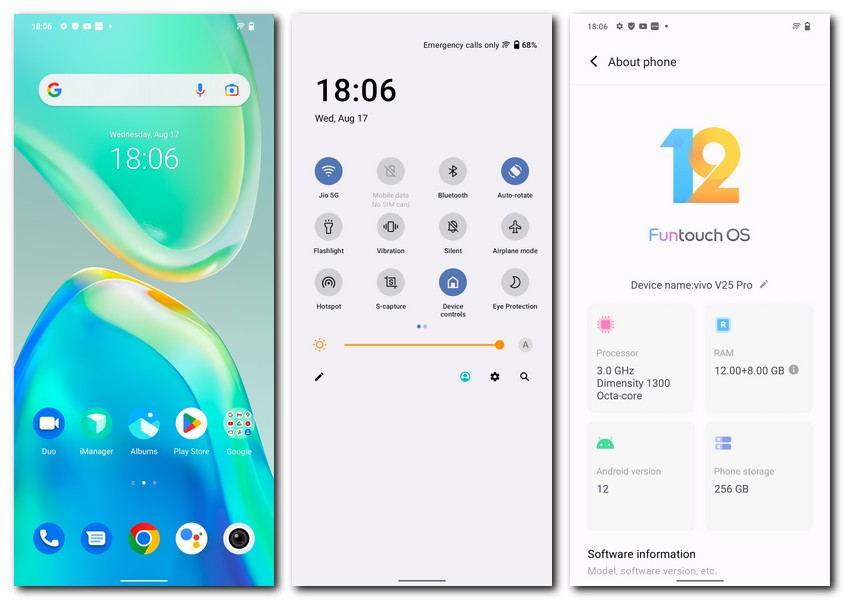
As good as the V25 Pro’s display is, the device’s mono speaker setup leaves something to be desired when watching videos and movies on the fly. That said, I have no complaints about the smartphone’s snappy in-display fingerprint sensor. As for 5G, the Vivo V25 Pro supports the hardware to make use of the service as soon as the Indian telecom infrastructure is upgraded. Software-wise, the device boots FunTouchOS 12, based on Android 12. You can read our Vivo X80 Pro review to know more about the interface but, to cut a long story short, the interface offers a healthy assortment of customisation features albeit is flush with bloatware.
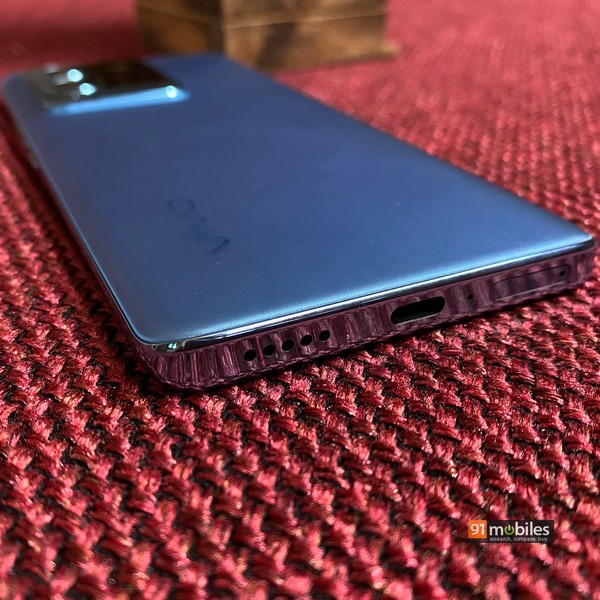
Moving on, the phone packs in a 4,830mAh cell that can fast charge at 66W. The device lasts a little over a day on normal usage and during my stint with the phone, I averaged around seven hours of screen on time on a daily basis. For anyone curious, my usage comprised binge-watching a few episodes of The Sandman on Netflix, having a one-hour BGMI session and browsing a bit of Facebook. By the end of the day, I usually had around 35 percent battery still in the tank, which is great. And, on the off chance you’re running low on juice, the phone can charge completely in about an hour too.
Final verdict
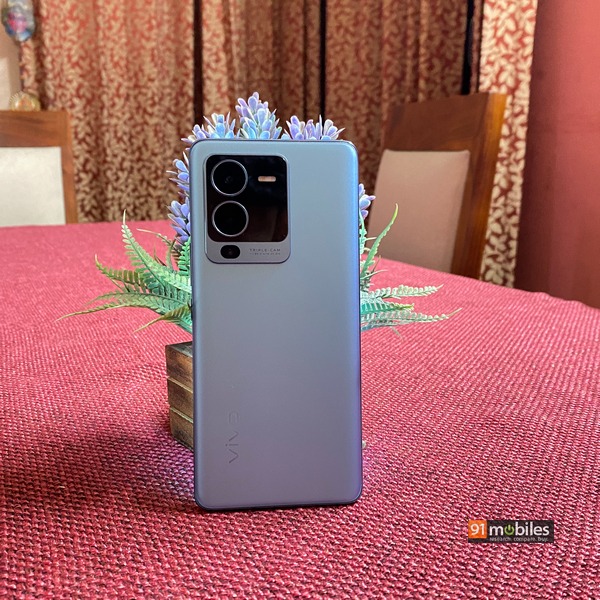
The Vivo V25 Pro’s pricing can be a bit tricky to work around. On one hand, you will be hard-pressed to find a better-looking phone in the budget flagship space. However, the choice of processor coupled with the handset’s mono speaker setup plays to the detriment of the device. Be that as it may, the V25 Pro looks the part of a premium product and offers a gorgeous, curved display too. Add to that the device’s long-lasting battery backup and the V25 Pro is a decent option to consider in the flagship-killer space.
Editor’s rating: 3.5 / 5
Pros:
- Exquisite design
- Capable display
- Decent battery life
- Capable camera stack
Cons:
- Ships with bloatware
- No stereo speakers
 | Rs. 32,990.00 | Go To Store |
 vivo V25 Pro 5G vivo V25 Pro 5G | vs |  realme GT Neo 3 5G realme GT Neo 3 5G |
 vivo V25 Pro 5G vivo V25 Pro 5G | vs |  OnePlus 10R 5G OnePlus 10R 5G |


